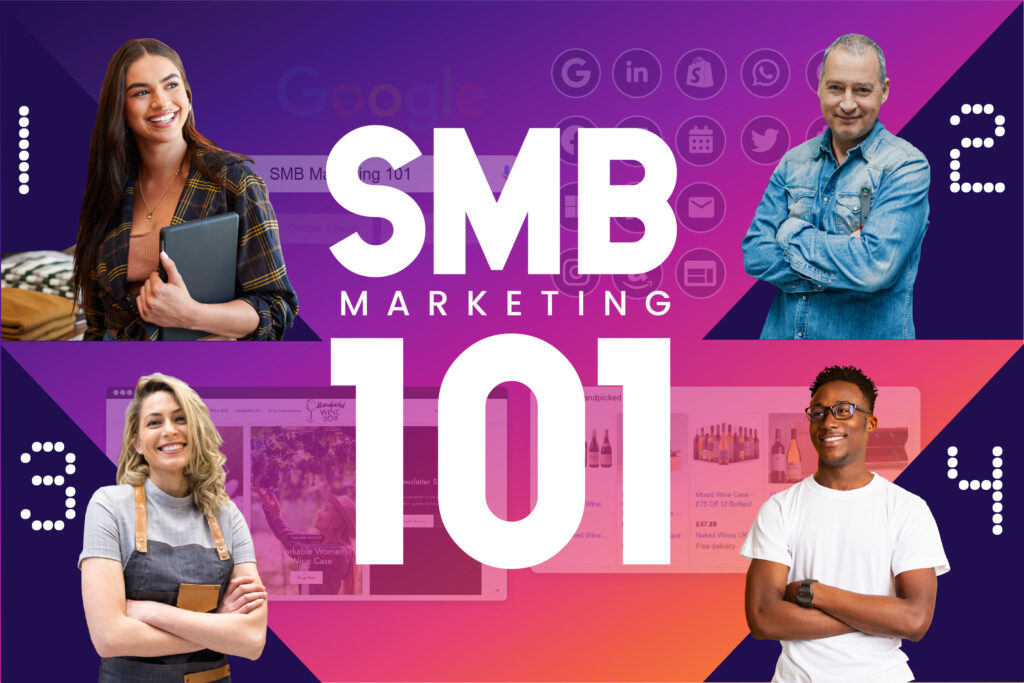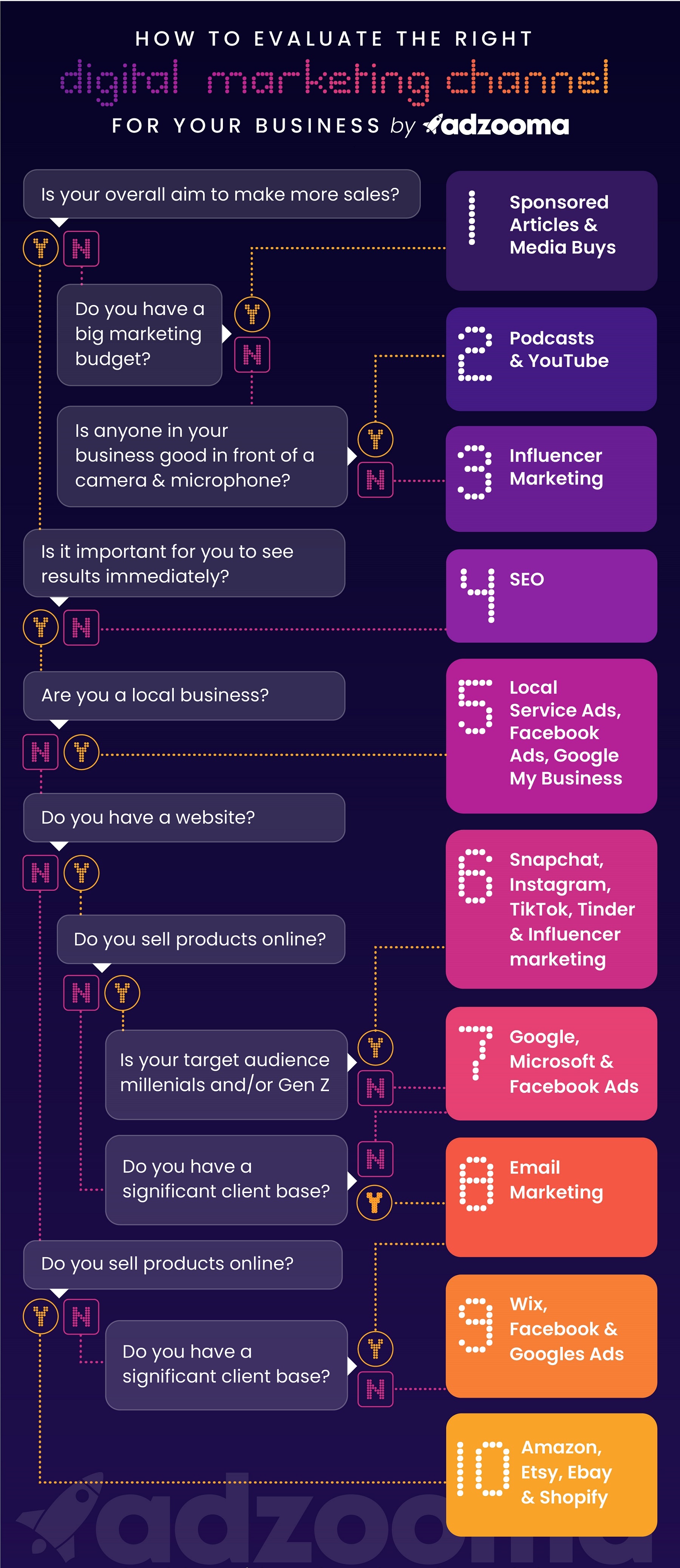Click through for part 1, part 3 or part 4.
In part one, we spoke a lot about getting your research in order and how to conduct it.
For this part, we’re going to look using that research to develop your brand and help you take steps towards choosing what digital marketing channel is best for your business.
So let’s get back into it.

Developing your brand
Something so crucial when developing a foolproof digital marketing strategy is creating a brand strategy that is consistent with what you want to achieve.
There are a number of different elements you need to consider with your brand strategy, including:
- Brand purpose,
- Brand values
- Mission statement
- Brand personality
- Vision
- Voice
- Value proposition
- USP (Unique Selling Point)
And all of it needs to align and remain consistent, so internally you know how to operate, and externally you authentically resonate with your customer.
A few years ago developing a brand with such depth would’ve been solely for big businesses, but as the competition increased, operating without such depth is sure to leave you behind – in the digital age it’s even more so and it’s increasingly difficult to stand out. After all, if you don’t stand out, your customers don’t have a reason to pick your business.
Every niche is jam-packed, from glow in the dark clothing to digital marketing software, so to really make a mark you have to be different – either through your branding or your offering.
“We defined our brand as someone who believes in test-based Digital Marketing techniques, ‘No theory, all results’,” says Matt Diggity, the founder of Diggity Marketing.
“Our USP was website development and design. When we launched our website, every company was seeking to build an online presence. Thus our USP worked really well, and we got a headstart in working with over 1000 clients in 3 months.”
This all might take time for you to develop, but make sure you put the time in. These foundations will end up being crucial later down the line.
Which digital marketing channel will work?
Once you’ve got your research, your goals, and your brand strategy in place, you can now start thinking about how you’re going to achieve what you want to achieve.
This is where you need to start thinking about which channel might be best for you. And that’s why we created this infographic.
All you have to do is just answer yes or no to the questions below and it’ll take you to the digital marketing channel that is right for you.
You’ll also almost always end up with two or three channels to choose from – that’s because there’s rarely one size fits all, while it’s also never a good idea to concentrate on only one channel.
(Click to enlarge)

You can read more about why each channel is best for you by clicking here.
What kind of budget will I need?
Obviously a lot of this depends on how much you can afford, but most digital marketing channels aren’t all that expensive.
Getting listed on Google My Business for example is free and there are a number of email marketing platforms that are initially free in the first instance until you have enough subscribers – and even then it’s unlikely to be more than $50 a month.
The influencer marketing price range is huge – it can go from anything from $20 for a local Instagram influencer to millions if you’re hiring someone like David Beckham or Tom Cruise (good luck with that!).
Sponsored articles range widely too, for a website like Small Biz Trends you’re looking at about $2,000 while someone like Ad Age is $17,000.
With Shopify, prices start at $29 a month. Wix starts at $18 a month.
SEO is a little bit different, because the only money you’ll spend is in time if you do it all in house. We’ll get onto more of that in part 3. We did some research on SEO agency costs in 2020, and in the UK you’re likely to pay about £900 per month.
For Google Ads, local service ads, Instagram, Amazon, Etsy, Ebay, Facebook, LinkedIn, Microsoft, Snapchat, YouTube, you will pay every time somebody clicks on your ad. This could be expensive, as Brian Anderson, the founder of My Supplement Store explains:
“Our first stab at digital marketing was with Google Adwords [Former name of Google Ads],” he says.
“We spent way too much and didn’t know how to track if it was working or not. It most likely wasn’t even set up correctly. We just looked at traffic. Looking back, we should have hired someone to help set it up for us.”
These days there are free tools out there like Adzooma that make it much easier for those starting on Google, Microsoft or Facebook to get to grips with the platforms, because as Brian goes on to say, they are super effective when they work well:
“Over time though, we learned more about Google Adwords and now spend about $10k per month. We sell over $50k, so it is doing quite well for us,” he explains.
On average, Google says they “conservatively estimate that for every $1 a business spends on Google Ads, they receive $8 in profit through Google Search and Ads.”
This of course, doesn’t take into account lack of knowledge in the first instance, but with the aforementioned free tools like Adzooma, this is becoming less of a problem. In part 4, we’ll get into the nitty gritty of how much you’re likely to pay for each click.
But before you get started with anything, it’s crucially important to get testing as Wesley Exon, the founder of Best Value Schools says, “We identified the top five platforms and began our first round of testing to see which performed best.
“Once we narrowed it down to the top 3, we did A/B split testing to test ad performance and measured clickthrough rates and engagement. This testing determined how and where we’d advertise, as well as how we allotted our marketing budget.”
Testing is always recommended in whatever you do in digital marketing. We created the infographic to cater for that, that’s why we gave you multiple channels to try once you got to each destination.
There are going to be so many occasions when you’re on the fence about what to do next, or you and your business partner are split on what kind of approach will perform better. And if that’s the case, and the potential is open to you, then testing takes the decision out of your hands and into the hands of the data.
Key Takeaways
Create a brand strategy
- Together with your research from part 1, define your brand’s purpose, your mission statement, your vision, and your USP position yourself as something different in the market
- Develop your brand values, personality and voice to align yourself internally and create an authentic customer experience
Assess the digital marketing channels
- Using the goals you set up in part 1, work out what it is you want to achieve
- Follow the infographic to the marketing channel destination
Start thinking about your budgets
- Assess how much budget you can afford to throw at your digital marketing strategy
- Research how much each channel is likely to cost and how much you pay
- Take a mutli-dimensional approach to your assessment and always, always test
Next up…
Now that you have all your plans in place, you’re starting to think about your marketing channels, and how your budget will fit in with that.
In part 3 we’re really going to dive into what foundations you need to get in place to move on to those marketing channels.
We’ll look at how you can get your name out there, where you should start with getting a website set up, getting listed on a marketplace, what first steps you should take with SEO, and how you should approach social media.




